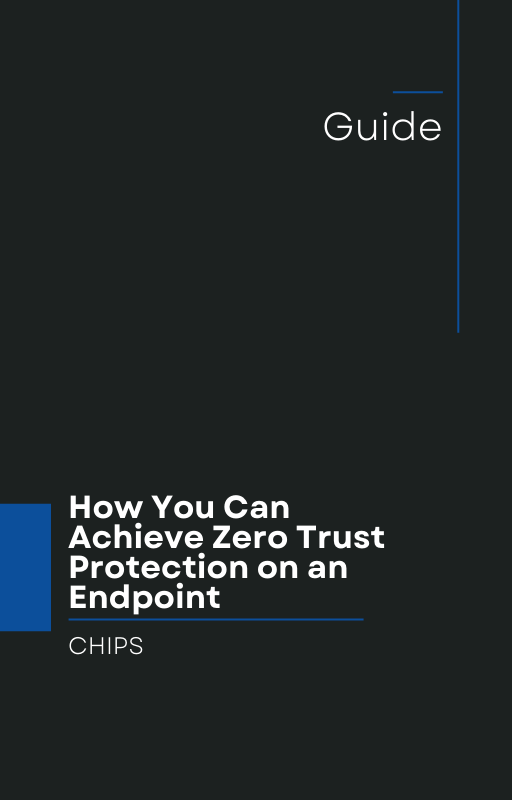Ransomware is evolving—and fast. A new study by Cybersecurity at MIT Sloan (CAMS) together with Safe Security analyzed 2,800 real-world ransomware incidents from 2023–2024 and found a startling trend: over 80 percent of these attacks were driven by artificial intelligence. secureworld.io
This isn’t just hype. Attackers are increasingly adopting autonomous, adaptive systems that can probe, assess, and strike — often without human direction. These AI-powered threats are surgically precise, selecting high-value files, adjusting tactics mid-attack, and evading traditional defenses.
In this new reality, simply detecting and responding late in the kill chain is no longer enough. What business owners need is a paradigm shift: move from Detect & Respond toward Isolation & Containment. And that’s where AppGuard, now commercially available and backed by a decade-long track record, becomes a game changer.
From Reactive to Proactive: The Race Is On
The new frontier of ransomware
According to the MIT Sloan / Safe Security study, AI isn’t just augmenting ransomware — it's becoming the engine behind it. Among its key findings:
-
Automated kill chains — AI systems can orchestrate reconnaissance, privilege escalation, lateral movement, encryption, and extortion with minimal human intervention.
-
Targeted file selection — Rather than blanket encryption, these attacks focus on mission-critical or high-value data to maximize leverage.
-
Dynamic adaptation — Attackers can change their tactics mid-exploit to evade defenses. AI-based decision-making is continuously in the loop.
The authors warn: “AI-powered cybersecurity tools alone will not suffice.” A new, multi-layered defense posture is essential — and defenders need to think differently.
Why “Detect & Respond” is becoming obsolete
In traditional cybersecurity models, the logic goes like this:
-
Detect a suspicious event.
-
Analyze and escalate.
-
Respond — quarantine, remove, remediate.
-
Recover.
But by the time detection happens, a determined AI-powered threat may already have traversed multiple stages, encrypted files, or exfiltrated data. The window for response narrows dramatically when attackers adapt rapidly.
What businesses need instead is a shift to Isolation & Containment — stopping malicious actions at or before execution, quarantining risky processes, and limiting lateral spread. That way, even if a threat emerges, it can be confined before it does real damage.
Why AppGuard Is the Missing Layer in Your Defense Stack
AppGuard isn’t just another endpoint tool. It’s a proven, battle-tested solution with over ten years of success in isolating and containing malicious processes in real time.
Key strengths of AppGuard:
-
Proactive isolation: Rather than waiting for an exploit signature or behavioral alert, AppGuard constrains untrusted code, preventing unknown attacks from executing.
-
Containment-first architecture: When something suspicious tries to act maliciously, AppGuard immediately contains it, stopping lateral propagation.
-
Minimal disruption: Legitimate workflows can continue. Blocked or contained components are clearly visible, allowing safe processes while dangerous ones are quarantined.
-
Decade of trust: AppGuard has been deployed in critical environments (including government and defense) for years, consistently protecting against zero-days and advanced threats.
In short: with AppGuard you don’t wait to see an alert; you stop malicious actions before they can escalate.
How To Begin the Shift in Your Organization
1. Reassess your risk model
Look at security investments not just as detection or response tools but as containment enablers. Ask: “If an attacker lands on an endpoint, can I stop them before damage spreads?”
2. Layer intelligently
AppGuard works in harmony with antivirus, EDR, and security platforms — not as a replacement. Think of it as an enforcement layer that ensures suspicious behavior is isolated immediately.
3. Test real attack scenarios
Simulate AI-driven attack chains. Observe how detection-only tools struggle to keep up. Then layer AppGuard and observe how the same steps are contained and neutralized.
4. Measure the shift
Track metrics like dwell time, lateral spread, and successful containment. Over time, you’ll see how isolation-first defense cuts risk substantially.
Ransomware + AI = A New Security Mandate
Attackers no longer need to meticulously script every step. With AI-backed systems, they can adapt, probe, and strike faster than ever. The SecureWorld article makes this clear: AI is now the standard in modern ransomware campaigns.
If your security posture still depends primarily on detecting then reacting, your organization is already behind. The future belongs to those who can isolate and contain threats before they proliferate.
Ready to shift from reactive defense to decisive containment?
Talk with us at CHIPS about how AppGuard can help your organization defend at speed — isolating threats before they take hold. Let us show you how to move from “Detect & Respond” into “Isolation & Containment” with confidence.
Like this article? Please share it with others!

October 9, 2025

Comments